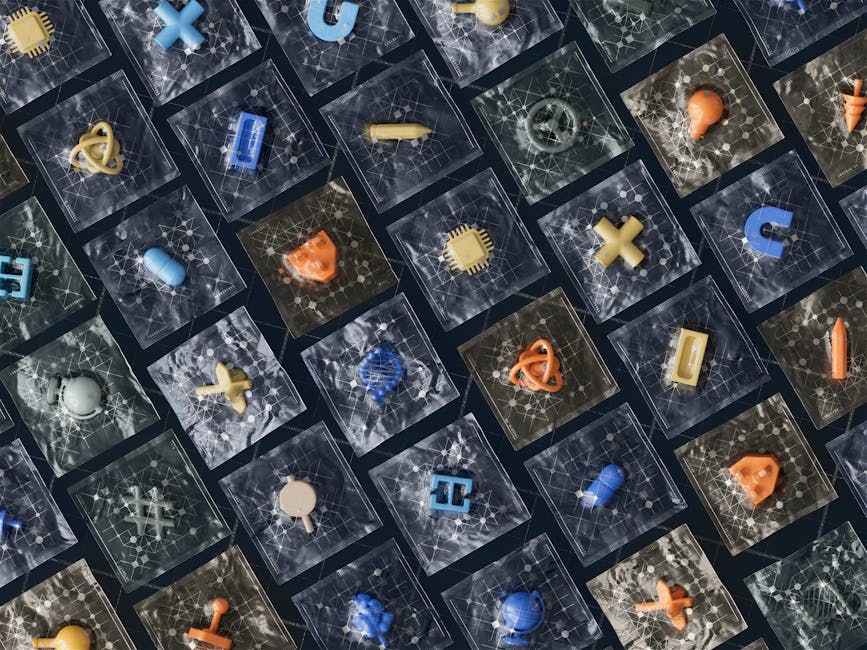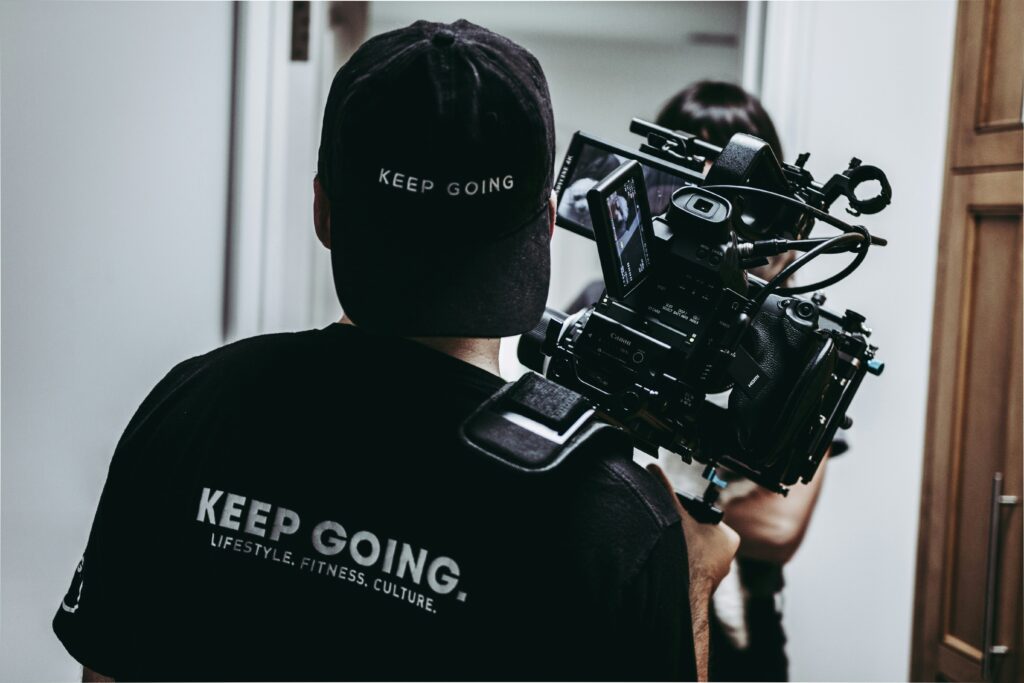Intro: A Turning Point for Media Creation
Artificial Intelligence is no longer a futuristic add-on in the media industry—it’s an active force reshaping the entire production pipeline. From idea generation to final edits, AI is embedding itself into every creative stage, making workflows faster, smarter, and more scalable.
The Acceleration of AI in Media
AI tools are developing at breakneck speed, offering solutions that were unimaginable just a few years ago. While early adopters experimented with automation and data-driven decisions, today’s tools are producing results that rival human output in both speed and sophistication.
- Scriptwriting, animation, music scoring, and voiceovers—AI is contributing at every phase
- Accessibility is expanding: once-costly tech is now available via desktop apps and cloud tools
- Platforms like Runway, Descript, and ChatGPT are becoming staples in content studios
More Than a Trend
This isn’t a novelty that will fade with hype. AI’s integration into media is changing job roles, creative expectations, and what’s possible on smaller budgets.
- Streaming platforms and indie creators alike are adopting AI workflows
- Media companies are investing in AI departments alongside traditional teams
- The shift parallels other technological revolutions—from film to digital, analog to virtual
From Script to Screen: AI Is in the Room
Whether it’s helping writers feed story prompts into language models, optimizing camera angles through machine learning, or generating realistic voiceovers, AI is becoming the invisible co-producer behind modern media.
- Writers use AI to brainstorm, iterate, and even format scripts
- Pre-visualization tools simulate scenes before a single camera rolls
- AI voices and avatars make re-recording dialogue faster and cheaper
What used to take multiple departments weeks to produce can now be drafted in a fraction of the time, allowing more creators to focus on big-picture storytelling while machines handle the repetitive tasks.
The takeaway: media isn’t just adopting AI—it’s evolving with it.
Writing & Script Development: The New Co-Author
AI is reshaping the way stories are written, pitched, and developed across the media landscape. What once took weeks of brainstorming and edits can now happen in hours—with AI tools playing an active, often collaborative, role in the process.
AI-Assisted Storyboarding and Script Generation
Today’s advanced AI platforms can develop entire story outlines and dialogue drafts based on user prompts. Writers can:
- Generate loglines, synopses, and character breakdowns in moments
- Create multiple plot alternatives and narrative arcs in minutes
- Experiment with tone, genre, or pacing by adjusting inputs and constraints
Storyboarding is also evolving: AI can now help visualize scenes using reference images, motion templates, or mood boards based on script inputs.
Speed vs. Creativity: Where’s the Line?
While AI speeds up production, it also raises key creative questions:
- Does faster output compromise storytelling depth?
- Are scripts becoming formulaic due to dataset limitations or predictive text bias?
- Where should humans take over to preserve voice and originality?
Pacing and productivity matter—but not at the expense of emotional resonance or innovation. Writers increasingly rely on AI for idea generation and structural guidance, while handling nuance, subtext, and dialogue refinement themselves.
Real-World Use: AI in the Writers’ Room
AI isn’t replacing writers—it’s joining them. Here’s how:
- Marvel Studios and other industry giants have trialed AI-powered plot simulators to test story arcs against franchise continuity.
- Independent production houses use AI tools for early drafts, helping focus human energy on higher-level narrative decisions.
- Television writers’ rooms employ AI to analyze past script patterns and viewer data, helping them structure episodic storylines with greater precision.
In these scenarios, AI functions as a co-author—not a replacement. Teams that embrace AI as a collaborator, rather than a crutch, are gaining speed while maintaining creative control.
Pre-Production: Streamlining the Setup
AI isn’t just influencing what happens on camera—it’s transforming what happens before the cameras roll. During pre-production, where logistics meet creative planning, AI is helping studios and indie creators alike run leaner, faster, and more informed operations.
Smarter Casting Decisions
Finding the right talent for a role has always been a blend of art and instinct. Now, artificial intelligence is backing that process with data-driven insights:
- Facial analysis and personality matching: AI tools assess how well an actor’s appearance and performance style match character profiles.
- Performance modeling: Algorithms analyze past roles, delivery cadence, and audience reactions to predict chemistry and screen fit.
- Bias reduction: When implemented mindfully, AI can help flag unconscious casting biases by focusing purely on key performance metrics.
AI-Powered Location Scouting
Location scouts no longer need to rifle through endless archives or travel on speculation. Image recognition and database scanning have made finding the perfect backdrop faster than ever:
- Image-based search engines: Upload a reference photo and receive a list of matching real-world locations in seconds.
- 3D modeling and virtual walkthroughs: Evaluate fit without physically visiting a site.
- Weather and lighting prediction tools: Gauge seasonal lighting conditions using historical data and forecasts to schedule efficiently.
Intelligent Project Planning & Budgeting
Budgeting is being transformed from reactive bean-counting into proactive forecasting:
- Scenario modeling: AI tools simulate different production approaches to help predict financial and scheduling impacts.
- Smart budgeting platforms: Automatically track expenses, compare vendor rates, and optimize resource allocation.
- Risk analysis: Advanced AI systems can identify weak links in your plan—from tight timelines to potential scheduling conflicts—before they become real problems.
In 2024, AI won’t eliminate the challenges of pre-production, but it’s turning once-manual tasks into data-driven efficiencies. Creators who embrace these tools early on are gaining both speed and strategic advantage.
On-Set Automation: Smarter, Faster, Leaner
Lights, camera—algorithm. On-set production is speeding up and slimming down, thanks to virtual tools and AI-assisted cinematography. Studios are trading green screens for LED volumes and game engine-driven backdrops. What used to require massive sound stages, travel days, and large crews can now be done in a single room with a handful of people and the right tech.
AI is also creeping behind the lens. Tools can now frame shots, adjust lighting, and dynamically track motion based on pre-set visual styles. Cinematographers aren’t being replaced—they’re being given more control, faster feedback, and a wider creative range.
Meanwhile, real-time editing is shaving hours, even days, off production timelines. Directors and editors can see rough cuts while still shooting, making tweaks on the fly instead of in post. Color grades, keying, and even VFX inserts are happening mid-shoot. It’s not just faster—it’s tighter, leaner, and more flexible.
The new normal? Micro crews pulling off blockbuster-style sequences. It’s not magic. It’s machine learning, smart planning, and creators willing to adapt.
Post-Production: AI in the Editing Bay
AI is revolutionizing post-production by drastically reducing the time and labor once required to polish video content. From subtle enhancements to full-scale automation, AI tools are transforming how editors work—and what audiences see.
Intelligent Editing Tools
Post-production tasks traditionally demanded hours of manual effort. Now, AI-powered software can complete many of these steps in just moments:
- Automatic color correction: AI analyzes lighting, contrast, and skin tones to apply consistent grading across scenes, often learning from the editor’s style preferences.
- Sound mixing: Advanced audio tools can detect dialogue, background noise, and music tracks separately, offering cleaner, more balanced mixes without extensive manual intervention.
- Visual effects (VFX): AI assists with rotoscoping, tracking, and compositing, allowing smaller teams to execute complex effects without blockbuster budgets.
Synthetic Voices & Deepfake Reshoots
AI isn’t just behind the camera—it’s starting to take the mic and even step in front of it.
- AI voiceovers: Synthetic voices have grown more natural, faster to produce, and versatile across languages and accents. These are now commonly used in explainer videos, drafts, or where human voice talent isn’t feasible.
- Deepfake-style reshoots: Creators can now alter spoken dialogue or facial expressions post-filming. While this enhances flexibility, it also raises critical questions about authenticity, trust, and consent.
Are they time-savers or ethical landmines? It depends on how they’re used—and how transparently.
AI-Generated Music: Friend or Foe?
AI composition tools can quickly generate royalty-free soundtracks that adapt to mood, pacing, and genre with minimal human input. These tools are becoming popular in:
- Fast-turnaround video projects
- Underscored content for social media and promotions
- Budget-conscious indie and corporate productions
However, their rise poses a real challenge to traditional composers, whose nuanced and personal touch is hard to replicate.
Key Takeaway: AI won’t replace editors, voice actors, or musicians entirely. But in the hands of skilled creatives, it can eliminate bottlenecks, open new possibilities, and expand what’s possible on tighter timelines.
Distribution & Marketing: Algorithmic Reach
AI is now embedded deep in the marketing pipeline—right from pre-release buzz to post-launch ad performance. Audience targeting isn’t just about demographics anymore; machine learning models are predicting mood, content taste, even binge patterns across platforms. Creators and studios are able to plan campaigns with surgical precision, selecting not just where to place content, but when and how often.
Before a single trailer hits the web, AI tools are simulating audience response. Studios can test different tones, titles, thumbnails, and preview edits, then greenlight campaigns based on that data. It’s not about guessing anymore—it’s calculation. Less gut instinct, more high-confidence modeling.
What’s wild is how personalized it’s becoming. AI-generated trailers adapt to the viewer—action-packed for thrill seekers, character-driven for drama fans. Algorithms choose what to show, what to hold back, and how to hook each user differently. It’s one step away from custom ads for every individual. Efficient? Yes. Creepy? Sometimes. Effective? Absolutely.
Human + AI: Collaboration, Not Replacement
Despite the hype, AI isn’t here to steal the director’s chair—it’s here to carry gear, run tech, and maybe sharpen your rough cut. The smart creators are treating AI like a crew member, not a boss. It backs the human eye, not blinds it. Image stabilization, auto-transcription, even pre-cut editing templates—it’s all grunt work that lets filmmakers focus more on storytelling.
That shift is giving rise to a new role: the AI-literate creative. These are editors who know prompt engineering, cinematographers who can tweak AI lighting schemes, and producers who understand data as well as drama. Knowing how to talk to machines—and when to ignore them—is fast becoming core to any serious filmmaker’s toolkit.
But there’s a line. And ethics draw it. Creators should be asking questions like: Are we disclosing when a performance is AI-generated? Are we protecting the data used to train these systems? Who owns the final cut when both humans and machines have shaped it? The answer doesn’t need to be perfect—but it does need to be conscious. In a world speeding toward automation, staying intentional is its own kind of artistry.
Want to See the Magic Behind The Curtain?
If all this talk about AI-powered casting, adaptive storytelling, and on-set automation feels abstract, here’s your chance to go hands-on. We’ve uncovered how real-world productions are building the next wave of hits—with fewer people, smarter tools, and tighter timelines. From streamlined pre-production to post-heavy wizardry, today’s sets look very different from even five years ago. And no, it’s not just Marvel blockbusters using this tech—indie and mid-tier studios are in the game too.
Dive into the full breakdown of practical workflows, tech stacks, and creative pivots in our in-depth feature: Behind the Scenes: The Making of Popular TV Shows and Movies. It’s where Unreal Engine meets table read. You’ll see how AI is reshaping not just the tools, but the process. Worth the scroll.
Closing Thoughts: Tech is a Tool, Vision Still Rules
AI is speeding things up, no doubt. It’s reshaping the workflows, thinning out budgets, and making certain creative steps more efficient. But here’s the thing—it doesn’t dream. It doesn’t know what it’s like to wrestle with a story until it feels right. That part is still ours.
The heart of media production is still very much human. Audiences crave connection, nuance, and originality—things no algorithm understands deeply enough to replicate. AI can help you storyboard faster or tweak lighting with a few lines of code, but it won’t know why a scene makes someone cry or laugh out loud. That insight comes from people. From you.
So: learn the tools. Keep pace with the tech. But don’t lose your taste, your instinct, or your voice. In a world packed with machine-made content, authentic stories stand out more than ever. The game may be evolving, but the best players still bring soul to the field.




